An interview with Oakland Park, Florida Educator Clara Mabour
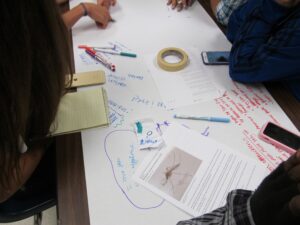 Clara Mabour teaches biology, marine science, and global perspectives at her alma mater Northeast High School in Oakland Park, Florida. As a 2017 Lemelson MIT Invent Teams teacher, she advised a group of students who developed an invention that prevents mosquitoes from breeding in stagnant water. In fact, Mabour’s been working to keep water clean since she was a student herself.
Clara Mabour teaches biology, marine science, and global perspectives at her alma mater Northeast High School in Oakland Park, Florida. As a 2017 Lemelson MIT Invent Teams teacher, she advised a group of students who developed an invention that prevents mosquitoes from breeding in stagnant water. In fact, Mabour’s been working to keep water clean since she was a student herself.
Growing up in a creative household
A native of Haiti, Mabour was raised by her father, an artist, and mother, a seamstress, in a creative household. That creative upbringing shaped who she is today. “Having that kind of environment where I could have the freedom to explore that part of my mind is it just made me who I am,” Mabour said.
The mosquito problem (part one)
Mabour loves a challenge, and she’s been competing in academic challenges since high school. During her senior year, in the aftermath of the 2010 earthquake in Haiti, Mabour worked as a member of a team to invent an emergency shower and water filtration system to be used following natural disasters. “We found that people couldn’t use the water because of the cholera,” Mabour said. “That invention actually ended up at the White House Science Fair in 2013 while I was in college.”
Getting involved
Mabour loves teaching, but being a teacher wasn’t a lifelong dream. In fact, she found the prospect of teaching high school students pretty daunting. But a chance phone call from one of her own teachers changed everything.
“I started working for the city of Oakland Park in their after school programs, and I loved working with young people,” Mabour said. “ And my invent team’s teacher from when I was in high school called me one day and said there’s a job open, and I know that you’re working with kids now, so maybe you’d be interested in applying. So I applied, and next thing I know, I am the awkward biology teacher making jokes about random things, and I enjoy it.”
Embracing her own style
Because Mabour didn’t follow the traditional path to become a teacher, it’s no surprise that she’s developed her own teaching style. The key, she said, is to approach in-class education through topics that are relatable to her students.
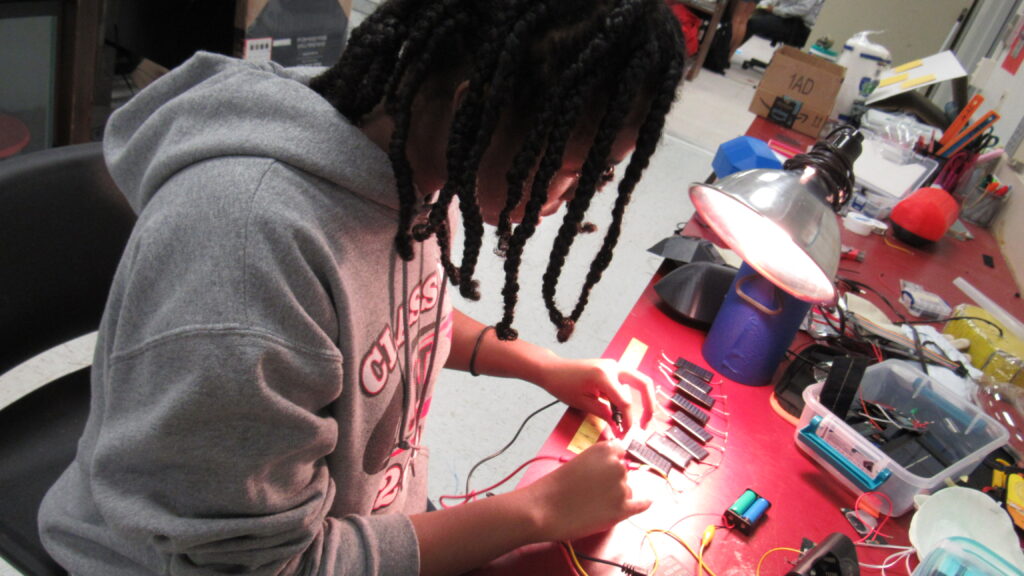
“I definitely do not have the traditional approach to teaching at all, and this was evident from evident from day one,” Mabour said. “My students from my first year teaching, at the end of the school year they told me that I was the most awkward teacher they had when they first got there. But through the methods that I used to teach them, the topics were new to them and it was engaging to them. So they hadn’t they hadn’t had the opportunity to completely invent something on their own before.”
In fact, Mabour embraced a hybrid learning model long before the COVID-19 pandemic forced most educators to do so. “Some of my classes were random, almost like hybrid classes where the students were learning the content kind of on their own. So when they came to class, we were doing things and getting involved in making some making something, designing something.”
Teaching students to create their own flowers…
With her think-outside-the-box approach, Mabour believes invention education can be applied to a range of subjects. “So for my biology classes, after I teach my students about the parts of a flower, I’ll have them invent their own flower,” Mabour said. “To see them apply what they’ve already learned and then gather more skills like the prototyping, the research, the drafting skills to create something that they thought was just a normal, everyday object, now they’ve turned it into something potentially extraordinary.” Mabour understands invention education promotes collaborative learning and teamwork among her students in the classroom.
And make better soccer balls.
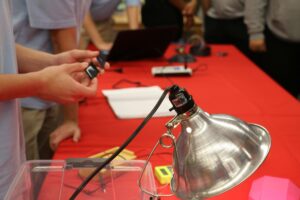 Just as importantly, Mabour knows the skills her students learn through invention education benefit them outside the classroom.
Just as importantly, Mabour knows the skills her students learn through invention education benefit them outside the classroom.
“What I find really important and beneficial to them is that they can see themselves as inventors and put themselves in that role,” Mabour said. “You don’t have to be a rocket scientist to be an inventor. You can actually be a soccer player and want to invent a soccer ball that counts how many times you can dribble a ball before it falls to the ground. That’s something that they can do on their own.”
Mabour said that her students often surprise her by formulating questions and developing solutions she herself hadn’t thought of. “I’ve seen that happen actually with students. I’ll give them a project in class, something random. And they’ll come back with something else that was not intended for them to create. They’ll just bring back, you know, something and will show me what we’ll do,” she said.
Sparking invention
Mabour said she’s often impressed by the lengths her students go in carrying the invention process beyond what she expected. In her global perspectives class, for example, she tasked her students to examine global problems and develop frameworks for solving those problems.
“When they enter the class, they’ll mostly work on maybe policies that they would put in place, and by the end, some of them have full-blown invention ideas that used to solve some of these problems,” Mabour said. “The possibilities of invention education are so vast. Sometimes it’s a process that people haven’t even considered before. So I can then then that part of invention education allows me to apply it to other topics or classes that subjects that I will want to teach as well.”
The mosquito problem (part two)
In 2017, at the height of national concern for the Zika virus disease, Mabour asked her students to develop techniques to limit mosquito populations, which transmit the disease. Mabour’s students learned mosquitos lay their eggs in stagnant water, and can remain dormant for some time.
“If there is just the slightest bit of water out, they can find a way to lay eggs,” Mabour said. “So with that, we know that the mosquito larvae need to attach the surface of the water in order to get oxygen. And so the water has to be still for that to happen. So my students thought, well, what if we disrupt the surface of the water? What if we break up that surface tension and make it so that the mosquito larvae can’t attach to the surface and just float around?”
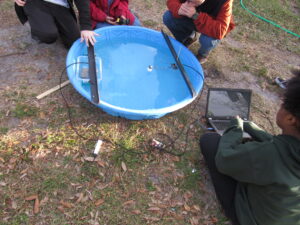 Mabour’s students developed a simple but effective solution. “They created the mosquito agitator, which is quite a simple solution, it basically just keeps the water moving,” Mabour said. “But the components and the device and learning how to code and running, you know, correct electrical lines was very important in that added to their the skills that they built from that project. And it’s something that continues to benefit them to this day. So now they have a patent pending that on this invention.”
Mabour’s students developed a simple but effective solution. “They created the mosquito agitator, which is quite a simple solution, it basically just keeps the water moving,” Mabour said. “But the components and the device and learning how to code and running, you know, correct electrical lines was very important in that added to their the skills that they built from that project. And it’s something that continues to benefit them to this day. So now they have a patent pending that on this invention.”
Breaking free from institutional teaching
Like most educators, Mabour understands the difficulties in teaching students outside of the traditional lecture model.
“When I first started thinking this goal, my students definitely were not used to having so much freedom and creative freedom,” Mabour said. “So I gave a project one day and one of my students is freaking out. I said, hey, are you okay? And she said, ‘I’m too institutionalized for this.’ She had realized that for her eleven years of education in the public school system that she had hadn’t been able to explore that part of her.”
Mabour said creative learning needs to be, well, learned, and recognizes it’s sometimes difficult to convince students to break free of traditional learning practices. “If you are forced in this box all the time, if you’re forced to think linearly and to think inside of the box, you kind of it’s something that you have to rebuild,” she said. “So for students who are hesitant, a lot of the approach from the educator side has to do with building that confidence for them, letting them know that they’re capable of doing events that they can use, what they’re interested in to get involved.”
The future is going to be wild and creative
Fundamentally, Mabour understands invention education isn’t simply ‘the wave of the future’ – it is the future.
“I think that the power of invention education is helping students and teachers and stakeholders and parents recognize that the future economy, society, all of that is not going to be made up of people who think linearly and who follow strict rules and guidelines,” Mabour said. “The future is going to be wild and creative. Then people have to be able to adapt and develop things on their own. So the power of invention education is its ability to empower students and parents and everybody involved in this idea to create and to create with a purpose, with the purpose of serving others in your community can even be people in your home or people from the other side of the globe.”
—
This summary was produced as part of the Invention Education: Portraits, Strategies, Starting Points podcast series.
The STEM Learning Ecosystems Community of Practice and the Lemelson Foundation have partnered to bring you this series of critical conversations on the importance of invention education.
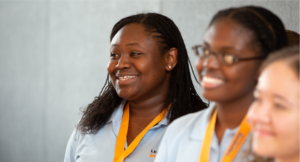 Clara Mabour, Teacher, Northeast High School, Oakland Park, Florida
Clara Mabour, Teacher, Northeast High School, Oakland Park, Florida
Clara Mabour is a biology and global perspectives teacher at Northeast High School in Oakland Park, California. As a teacher at her alma mater, Mabour recently advised a group of students of eight students as they competed and became state winners in the Samsung Solve for Tomorrow competition. Mabour is passionate about invention, education and creativity in the classroom. In addition to teaching, she facilitates an after-school STEM club and a new group of young inventors and future scientists who are conducting independent and team research projects that address local and global challenges.

